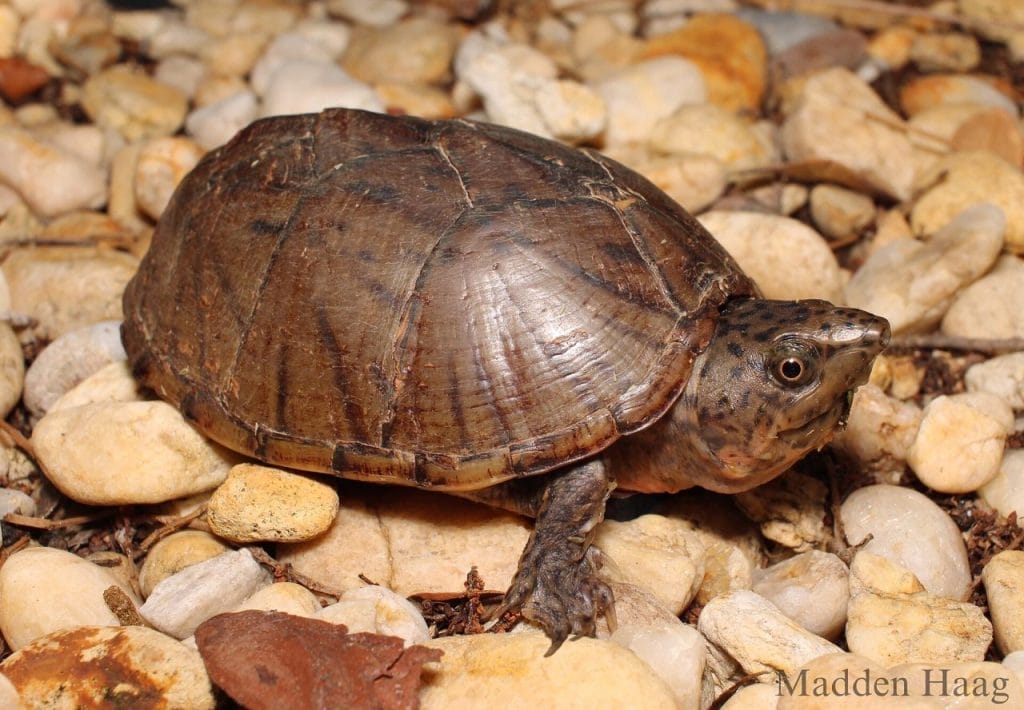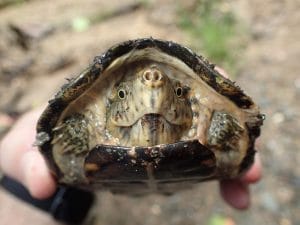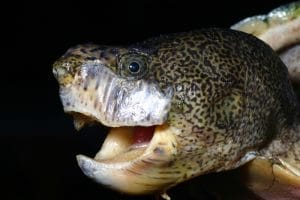Sternotherus intermedius (Aliflora musk turtle)
Home > Turtle Database > Sternotherus intermedius (Aliflora musk turtle)
Sternotherus intermedius, also known as the Aliflora musk turtle, is a small aquatic turtle species recently identified within the musk turtle family. It belongs to the Sternotherus genus and is closely related to other musk turtles, but it stands out due to its distinct physical features and limited distribution.
Native To These Regions
Alabama (USA)Native Turtle Species Map – Find Turtles by Region
Scientific Classification
Kingdom: Animalia
Phylum: Chordata
Class: Reptilia
Order: Testudines
Family: Kinosternidae
Genus: Sternotherus
Species: Sternotherus intermedius
Common Names
Aliflora musk turtle
Intermediate musk turtle
This Hilarious Turtle Book Might Know Your Pet Better Than You Do
Let’s be real—most turtle care guides feel like reading a textbook written by a sleep-deprived zookeeper.
This one’s not that.
Told from the snarky point of view of a grumpy, judgmental turtle, 21 Turtle Truths You’ll Never Read in a Care Guide is packed with sarcasm, sass, and surprisingly useful insights.
And hey—you don’t have to commit to the whole thing just yet.
Grab 2 free truths from the ebook and get a taste of what your turtle really thinks about your setup, your food choices, and that weird plastic palm tree.
It’s funny, it’s honest, and if you’ve ever owned a turtle who glares at you like you’re the problem—you’ll feel seen.
Identification
Description
The Aliflora musk turtle has an olive to dark brown carapace, sometimes with faint spots or patterns. Its plastron is small, leaving much of the turtle’s underside exposed, which is common for musk turtles. Its head features pale stripes running from the nose to the neck. Adults grow to about 3 to 5 inches.
Sexual Dimorphism
Males have longer tails, with the vent positioned farther from the body. Females are slightly larger in body size, but they have shorter tails.
Check more turtles from the Sternotherus genus
Native Origin and Distribution
Geographical Range
This species is found in parts of the southeastern United States, mainly within river systems and wetlands in Alabama and Florida. Its range overlaps with some other musk turtles, but it prefers smaller waterways with specific habitat conditions.
Preferred Habitat
The Aliflora musk turtle prefers slow-moving streams, swamps, and shallow rivers with soft, muddy bottoms. It hides under submerged logs, rocks, or aquatic plants for cover.
Behavior
Feeding Habits
This turtle is omnivorous, feeding on aquatic insects, small crustaceans, snails, and plant matter. It mainly forages along the bottom, using its sharp jaws to crush hard-shelled prey.
Predators
Predators include large fish, wading birds, raccoons, and sometimes larger turtles. Hatchlings are especially at risk due to their small size.
Reproduction
Breeding Season
Mating usually happens in spring and early summer, with nesting from late spring into mid-summer.
Reproductive Method
Females lay small clutches of 1 to 4 eggs in sandy or soft soil near water. Hatchlings emerge after about 60 to 80 days, depending on temperature and conditions.
Conservation
Extinction Status
The species has not been formally assessed because it was only recently identified, but its populations could be vulnerable.
Threats
Habitat loss from wetland drainage, pollution, and human development is the biggest threat. Collection for the pet trade could also become a concern in the future.
Conservation Measures
Protecting wetlands and limiting collection are important steps to ensure the species’ survival. More research is needed to track its population trends and habitat use.
Economic Importance
The Aliflora musk turtle has minor economic importance through the pet trade, as small, hardy turtles are popular with hobbyists. It also plays a role in local ecosystems by helping control insect and snail populations.
Interesting Facts
This species was only separated from other musk turtles recently after scientists compared its genetics and physical traits. Like other musk turtles, it can release a strong, unpleasant smell from glands near its shell when threatened, earning it the nickname “stinkpot.”

About Author
Muntaseer Rahman started keeping pet turtles back in 2013. He also owns the largest Turtle & Tortoise Facebook community in Bangladesh. These days he is mostly active on Facebook.















